Fall can be a busy time in the gardening world, and sometimes bulb planting gets delayed. Or sometimes we pick up some late season allium bulbs at the garden centre that need to be planted into the ground. If that’s the case, you may be wondering how late you can actually plant the allium bulbs, and still have beautiful spring blooms to look forward to.
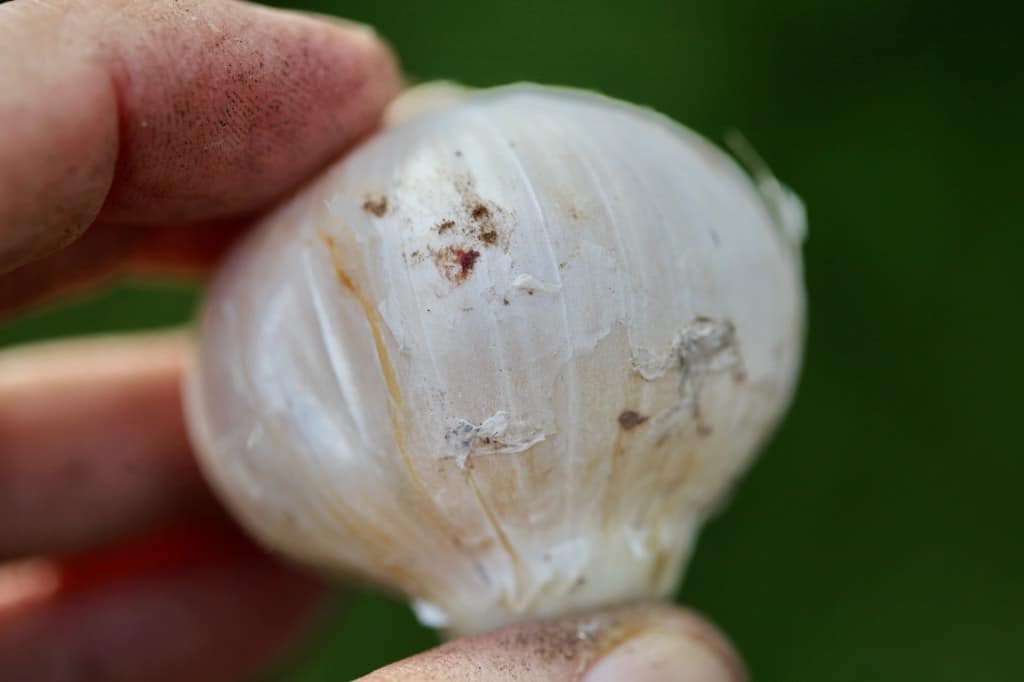
Growing allium bulbs can be rewarding, because these spring plants offer so much beauty to the garden space.
There are many different types of ornamental allium bulbs, and most put on a magnificent flowering display in the late spring or early summer months.
The tall and stately bulbs look amazing when grown en masse, and can be easily grown by even a beginner gardener.
In this post we will have a look at some considerations for allium planting time, and explore how late in the season allium bulbs can be planted with success.
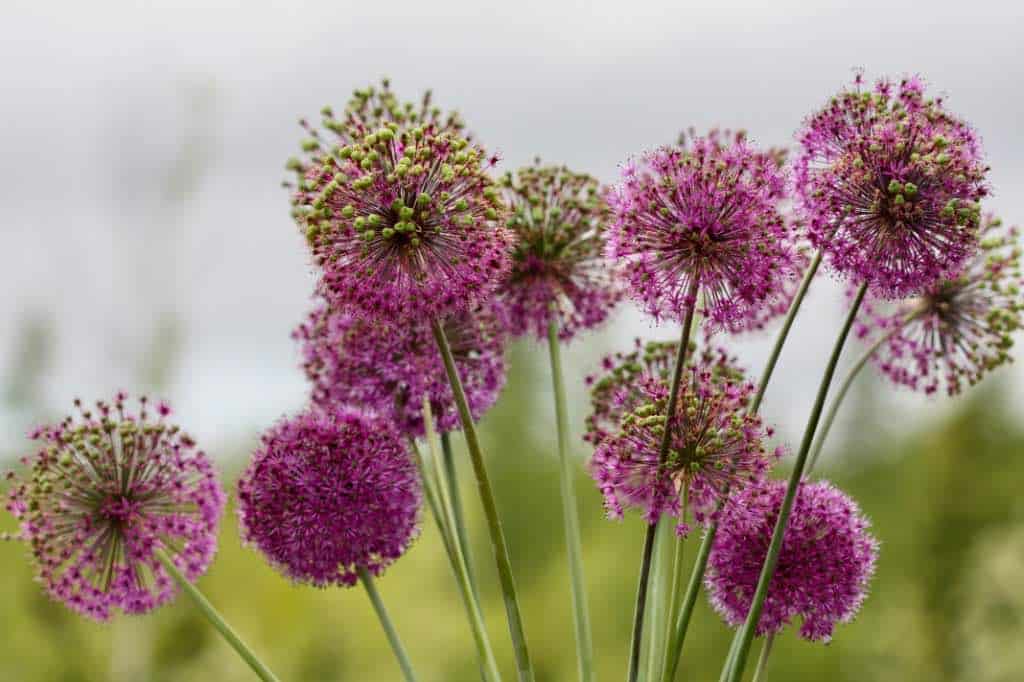
What Are Allium Bulbs?
Alliums are ornamental onions and herbal plants which grow from perennial bulbs. Wherever alliums grow, they add visual interest to the garden space.
Allium plants are members of the onion family, and can be grown for culinary, as well as ornamental use.
Alliums belong to the Family Amaryllidaceae, and to the Genus Allium. There are literally hundreds of different species of alliums, and many different cultivars to choose from.
For example, culinary alliums include not only all the different varieties of onions, but also garlic, scallions, shallots, chives, and leeks. These vegetables grow from bulbs, and produce the typical rounded flower at the top of the scape.
Then there are the ornamental alliums, which are grown mainly for their ornamental value and beauty. Ornamental alliums are usually not considered to be edible.
Ornamental alliums are low maintenance plants, and make a great addition to perennial gardens because of their unique appearance.
These bulbs generally produce striking round globe-shaped or pom pom shaped flowers when in bloom.
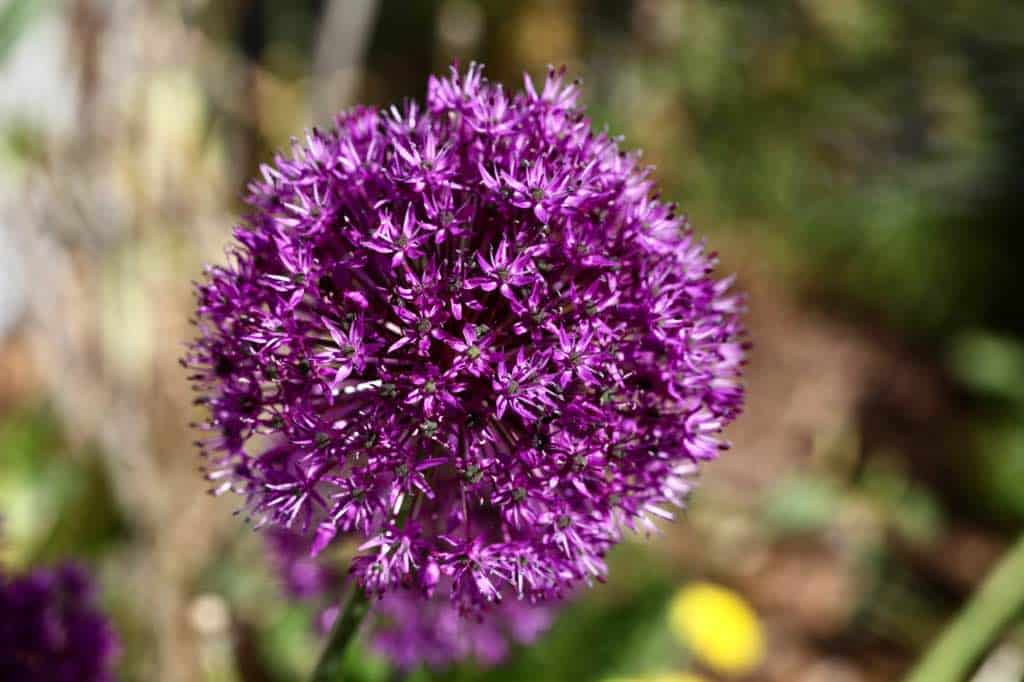
The Benefits Of Allium
Alliums have multiple beneficial uses, including providing attractive flowers for the garden space, pest repelling properties, as well as culinary use.
Some alliums are very tall and stately, and make quite a visual impact, even when only a few specimens are planted. Others may be smaller, and yet still be very beautiful, especially when grown together in clumps.
Some alliums are grown for consumption, and are used regularly in culinary applications. Not all are edible however, such as the ornamental alliums, so know your alliums before consuming.
Alliums produce a chemical compound called sulphate, which contributes to the typical onion or garlic flavor of most of these plants.
The allium is considered to be a natural pest repellant due to it’s sulfur-like and oniony smell. The plants will deter aphids, grubs, nematodes, and even Japanese beetles.
These plants therefore make great companion plants for roses, as well as other plants in the garden.
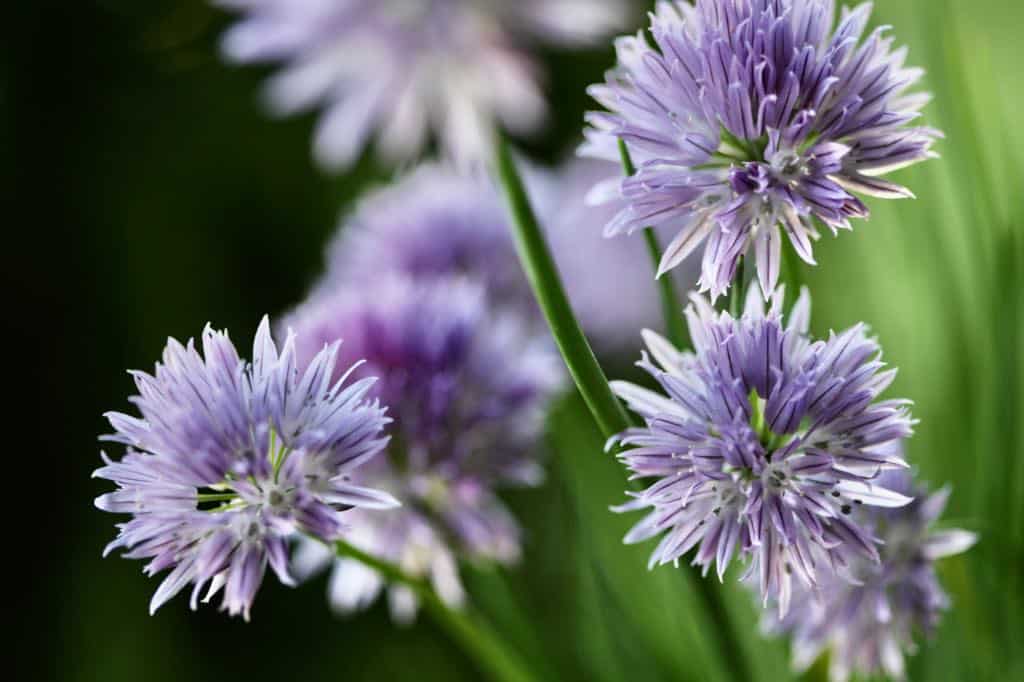
For the sake of this post we will be discussing ornamental alliums, which are grown for the flower garden.
Allium Flowers
When they are in bloom, allium flowers look like fireworks in the garden. The spherical blooms consist of many tiny star shaped flowers, which extend out to form pom pom shaped clusters.
The many tiny individual flowers on individual stalks lend to a sparkling and dazzling display.

Most allium plants have purple flowers, although there are different varieties with different shades of purple. Some alliums have white blooms as well.
The flowers are perched atop strong stems, and generally do not require staking.
Ornamental alliums come in a variety of different sizes, from the tall and stately giant allium, to smaller, dainty, front of the border varieties.
Allium flowers are eye catching when in bloom, however they are also visually appealing when they are spent. The globe shaped seed pods which form after blooming are also intricate, and interesting in the garden.
Ornamental alliums make wonderful cut flowers, and look elegant in flower arrangements.
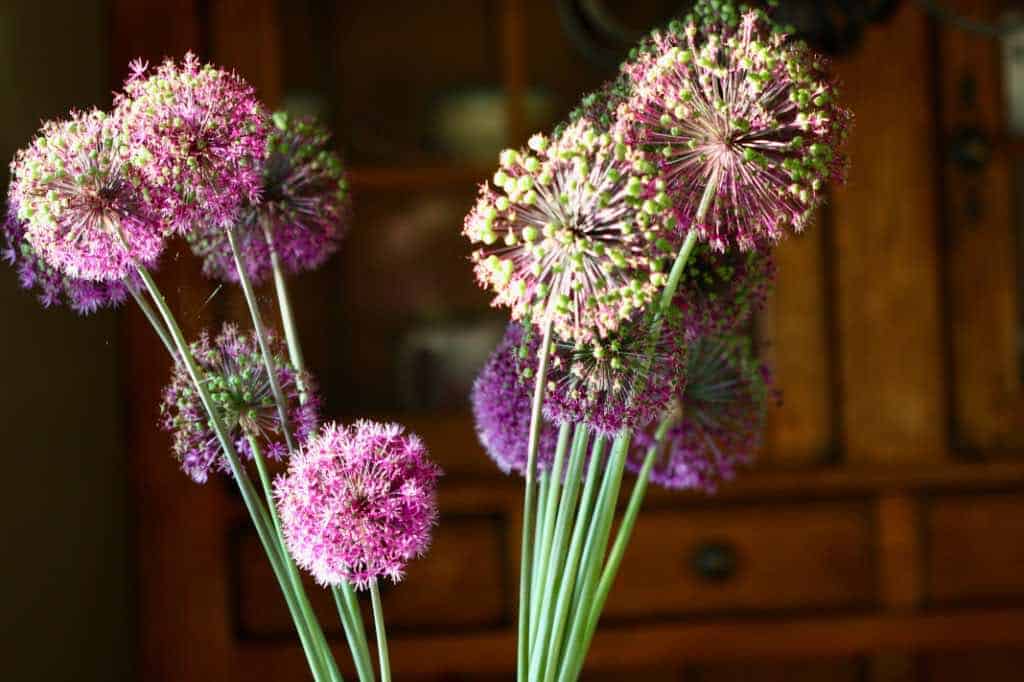
Timing Considerations For Planting Allium Bulbs
Planting Time For Alliums
Allium bulbs are usually planted out in the fall, so the bulbs will be exposed to a cold chill period in the ground throughout the winter months.
These alliums are considered to be spring plants, and will bloom in late spring or summer.
Some allium bulbs however, are planted in the spring. These alliums, such as Allium senescens app. glaucum, will usually bloom in late summer or fall.
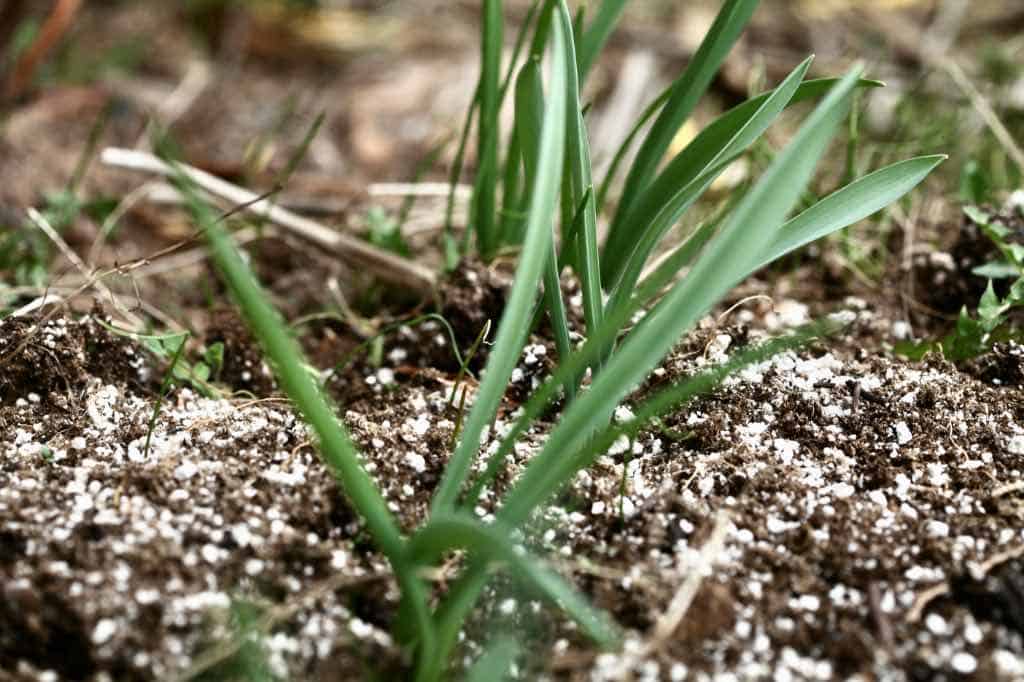
Timing Is Important
Timing is an important factor in growing allium bulbs, in that winter planted bulbs will need that cold exposure for blooming, and spring planted bulbs will need growing time.
However don’t fret if you are late with the planting, because from my experience, as long as the garden is workable for planting, you should be good to go.
Timing is important for the planting of allium bulbs. Each bulb variety will comes with it’s own specifications and optimal time for planting for best blooming.
For most ornamental alliums, a cold chill period is required for blooming. This cold exposure will enable the bulbs to develop their root system in preparation for spring.
It is usually for the fall planted allium bulbs when gardeners are wondering if they are too late to plant them, or if they have passed the time for an appropriate planting.
These bulbs can be planted whenever it gets cold outside in your hardiness zone. That means late September or October in colder zones, and even later in warmer zones.
Spring planted alliums are less of an issue. These bulbs are generally planted out at the beginning of the season, for a later blooming period at the end of the first year.
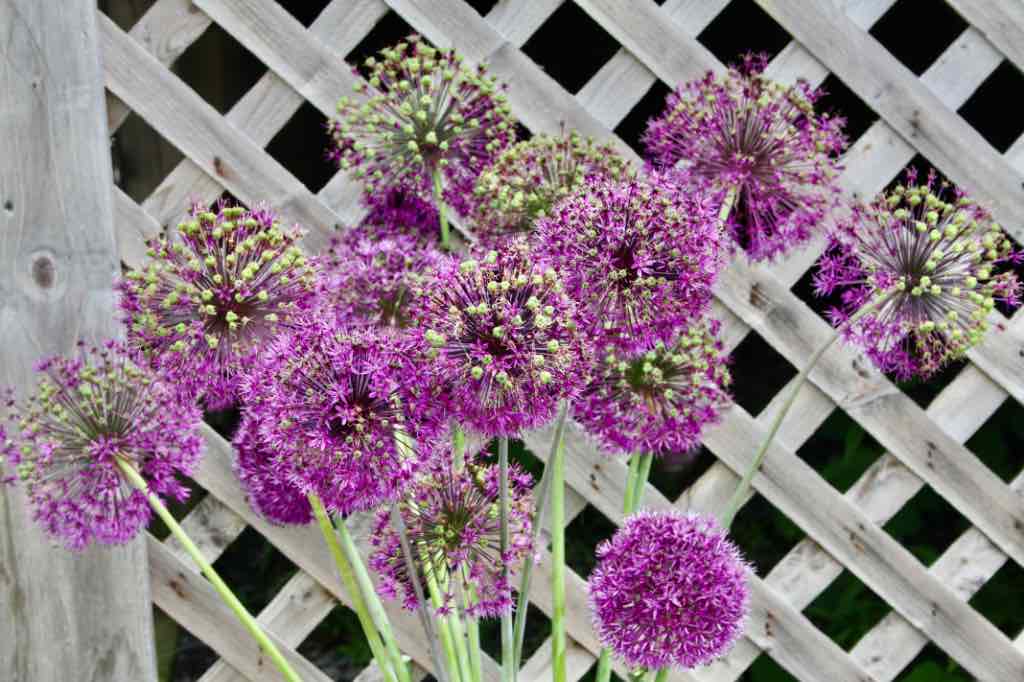
How Late Can Allium Bulbs be Planted?
So exactly how late is too late, when it comes to planting allium bulbs for successful growth?
In my experience, allium bulbs will grow and bloom in early spring, even when planted late in the season. As long as you have workable soil, and plant the bulbs in the soil before the ground freezes, allium bulbs can be planted, even if you get them in a little late.
If you plant the bulbs into the ground at the right depth, before the hard frosts set in, and the ground becomes covered in snow, the bulbs should be okay.
Remember different climates will have different timeframes for when the cold weather settles in. A very cold climate will have frost much earlier, than a warmer climate.
The best time to plant is when the weather gets cold, and there are at least 12 weeks of expected cold weather before spring.
So let the workable soil guide you, and don’t be hesitant to plant, if you can.
You can definitely plant after the first frost date, as long as the bulbs can easily be planted into the soil.
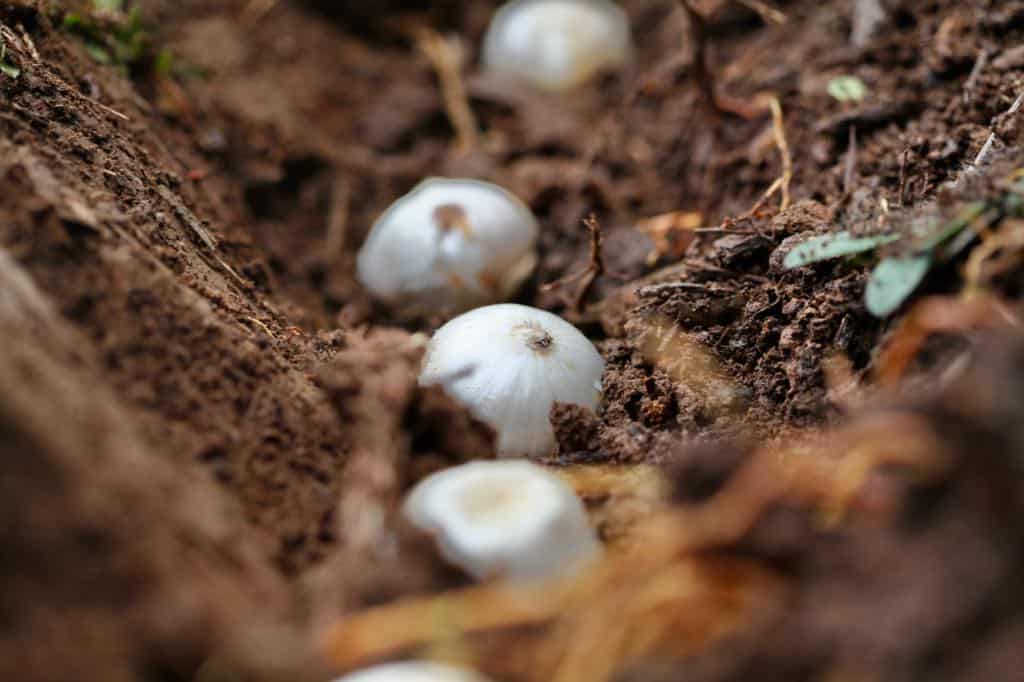
Tips For Planting Allium Bulbs
Growing Zone
- Ornamental alliums will grow in usda hardiness zones 3 to 8.
- Plant spring blooming ornamental allium bulbs in the fall, allowing for at least 12 weeks of cold before spring.
Light Requirements
- Choose a sunny spot for planting for the best flowering results.
- For a successful allium patch, a full sun location is ideal.
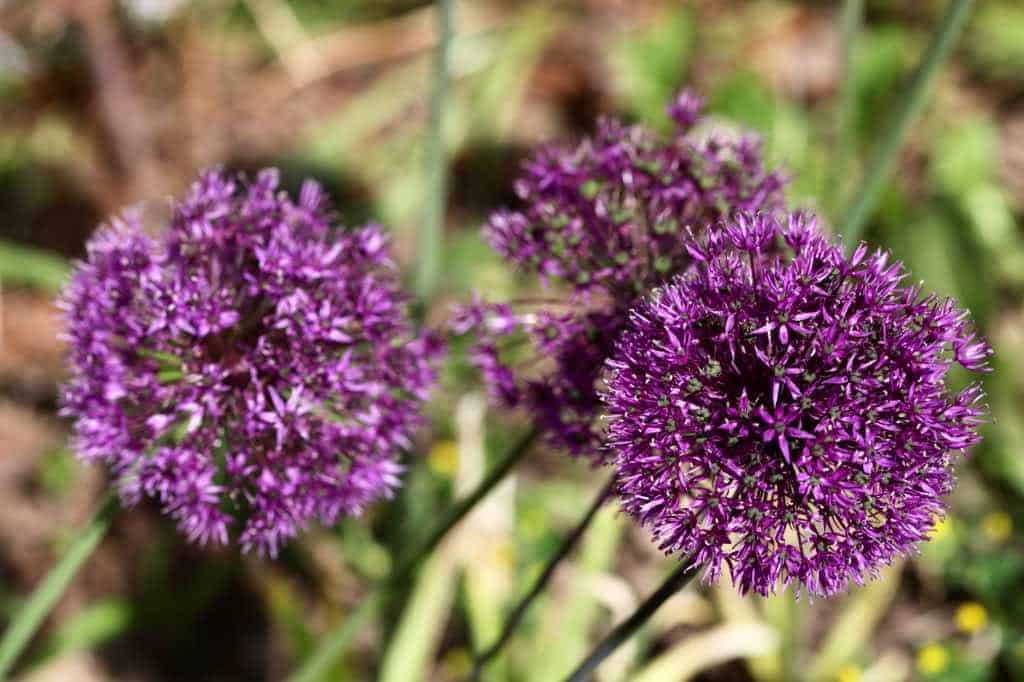
Soil Requirements
- Choose a fertile soil type with good drainage.
- Do not allow the bulbs to sit in poor draining soil, as this can cause bulb rot.
Moisture Requirements
- This same concept applies to moisture provision.
- Too much water provision and dampness can also cause allium bulbs to rot.
- Water in when planting, and then water as needed in the spring, during dry periods.
- Alliums are known to be drought tolerant, however will droop if the soil becomes too dry. If you notice drooping, be sure to give the plants some water.
- Otherwise allow nature to take care of the moisture needs of the plants.
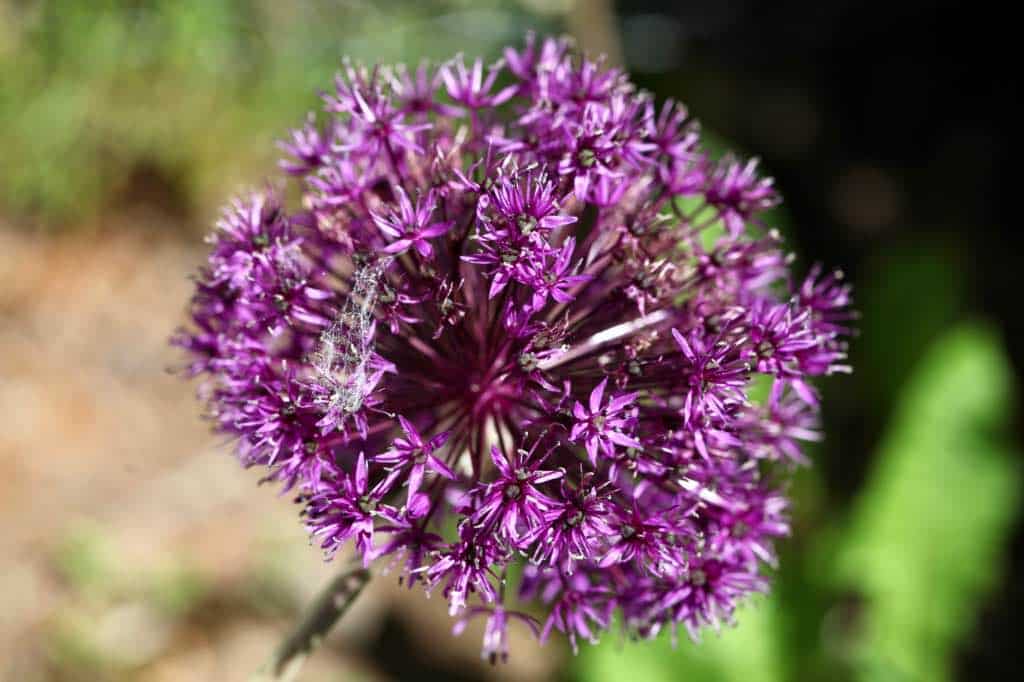
Planting Allium Bulbs
These are some considerations for planting allium bulbs:
Bulb Planting Depth And Spacing
- Plant allium bulbs with the pointy end pointing up, and the root side or flat side down.
- As a general rule of thumb, allium bulbs should be planted at a depth equivalent to 4 times the diameter of the bulb, or 2 to 3 times the height of the bulb.
- The bulbs should be spaced approximately 4 to 8 inches apart, with larger bulbs being the furthest apart.
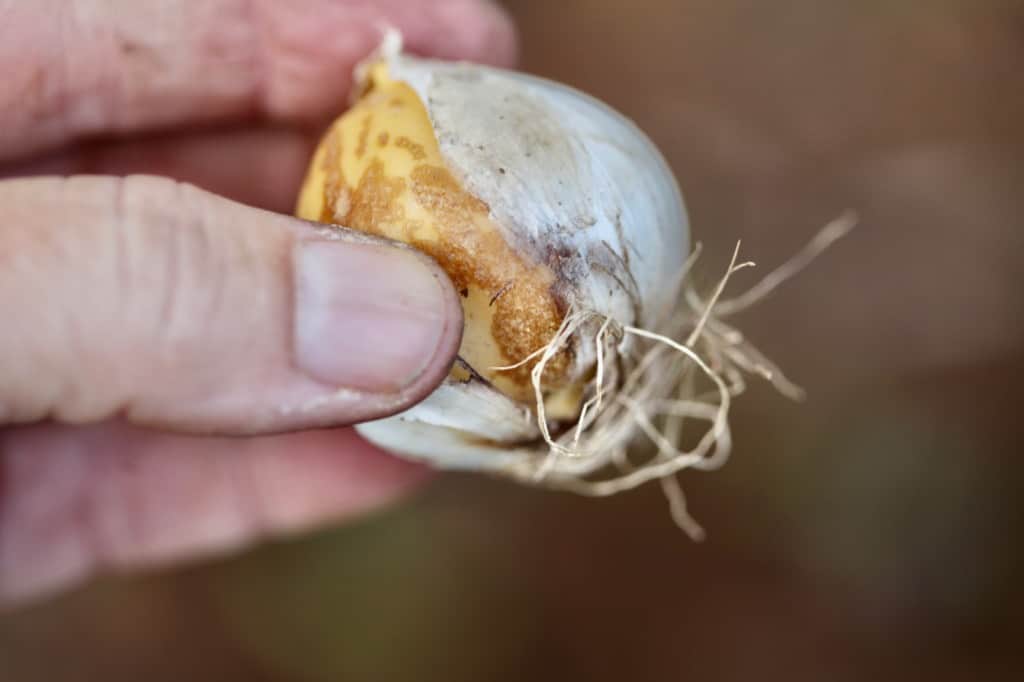
Digging Planting Holes
- Soil should be workable to allow you to dig planting holes to the right depth for the bulbs you are planting.
- Plant bulbs in fertile soil full of organic matter.
- If planting in clay soil, for best results, amend the soil to allow for good drainage.
- It’s a good idea to throw some bone meal into the planting hole when planting. Cover with soil to the proper depth of the bulb.

Plant In Clumps
- Plant allium bulbs in clumps of odd numbers for a naturalized look, and best visual impact.
- Larger and more giant ornamental varieties such as Allium giganteum can be spaced further apart, because even a single bloom is impressive all on its own.
- I like to plant the larger varieties in clumps of 3 to 5.
- Taller varieties of alliums with tall stems should be planted at the back of the border. Shorter varieties look best at the front of the border.
Plant For Succession
- Try planting different varieties of bulb plantings as well, which will bloom at different times.
- This will provide a succession of allium blooms throughout the season.
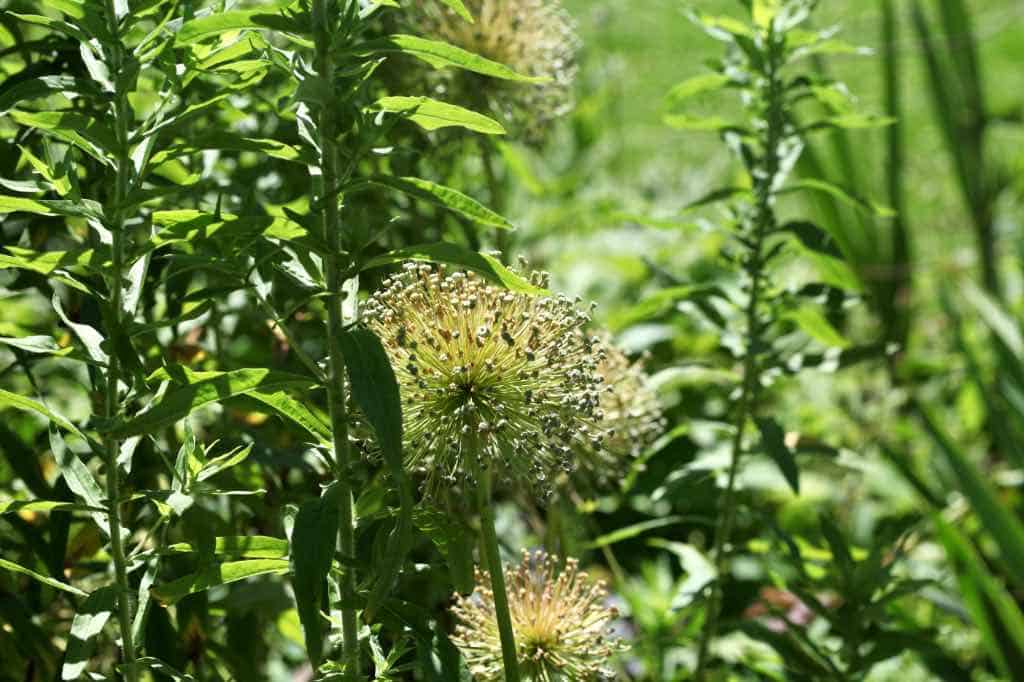
Allium Care Post Blooming
- Once alliums have bloomed you can trim back the flower heads or seed heads to help conserve energy within the bulb.
- Alternately you can allow the seed heads to remain, for self seeding as well as for enjoyment of the interesting pods in the garden.
- Allow the green allium leaves to completely die back naturally, because this process provides energy to the bulb, for future blooming next spring.
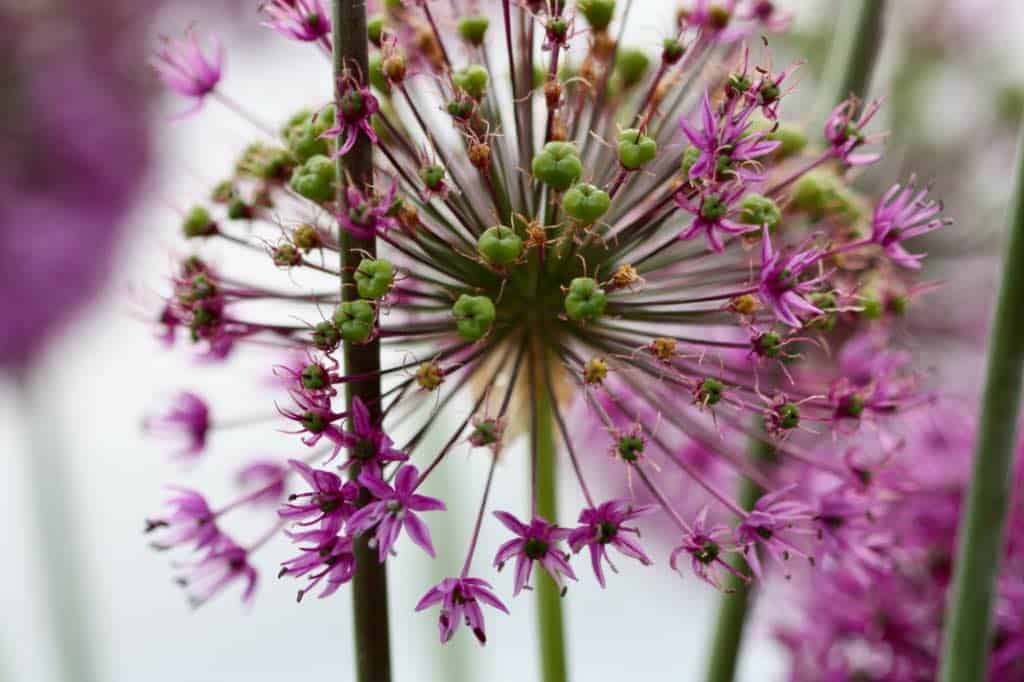

Frequently Asked Questions
What Happens If You Plant Allium Bulbs Too Early?
If allium bulbs are planted too early, and they are the fall planted variety, they will probably start to grow, and set some roots.
They may even produce some leaves. Energy which is used from the bulb for growth at this time, may interfere with the energy for next season’s blooming.
It’s best to wait until after your first frost, and when it is cold in your hardiness zone, before planting the allium bulbs.
If however the bulbs have been planted early, all is not lost.
The bulbs will likely bloom in the spring, and then thereafter, cycle through the seasons naturally, returning again the next year with a vigor.
Can You Plant Allium Bulbs Too Late?
If you plant your allium bulbs very late, perhaps in early to mid winter in workable soil, you will still have growth from the bulbs in spring.
Although you may not have best blooming if the bulbs have not had a long chill time. There is also a chance that you may not have any blooms at all in the first year.
However, it is likely best that the bulbs have been planted into the ground, rather than kept in storage.
The good news is that the bulbs will gather energy over the summer months, through the green growth that they send up.
Then the following spring, after a winter chill, the bulbs will be ready to bloom again.
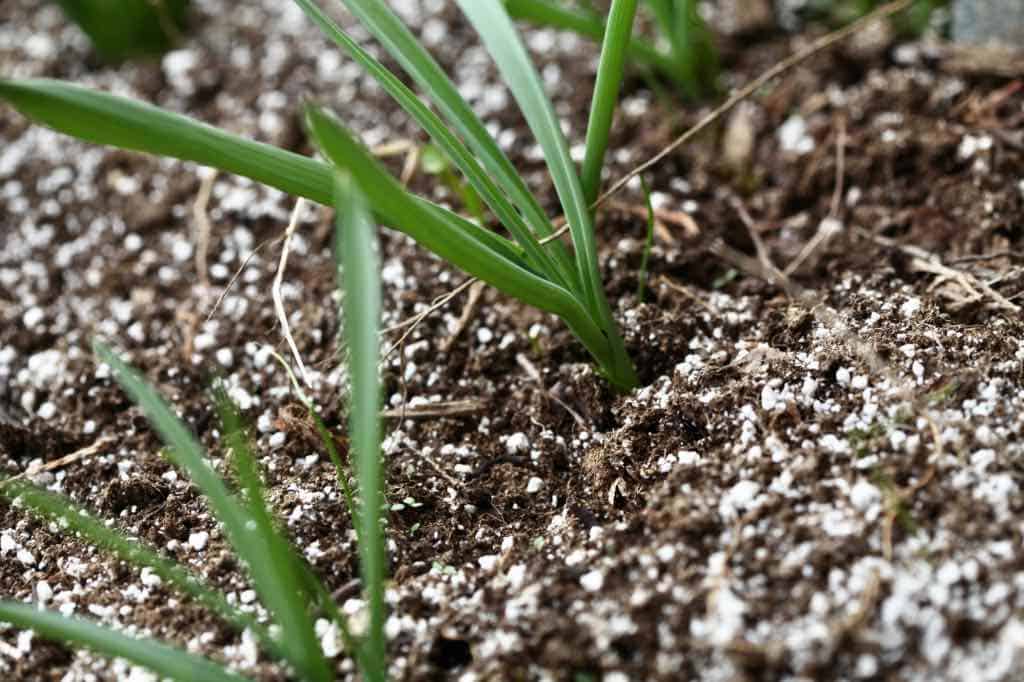
Can I Plant Allium Bulbs In Late Winter?
Allium bulbs can be planted in late winter if the ground is workable, however may not have the chill time required to bloom in the first season.
The bulbs will produce foliage during the first season, and grow and store energy for blooming in the subsequent growing season.
Allium bulbs will ideally have 12 weeks or longer of a cold period for best blooming. A shorter cold period will alter the bloom time, and can result in no blooming at all during the first season.
If this happens don’t fret, the bulbs are perennials, and will be exposed to the proper chill time during the next fall and winter season.
The bulbs will then be in sync, and will produce flowers the following year.
Can You Plant Allium Bulbs In The Spring?
Although many ornamental alliums are planted in the fall, some allium bulbs are actually considered to be spring planted bulbs.
These spring bulbs do not require a winter chill period for blooming.
Examples of spring planted alliums include Millennium Allium and Summer Beauty Allium, Allium senescens. These alliums are usually planted in spring via rhizomes.
Spring planted alliums will generally grow and spread via underground rhizomes. These alliums will also develop attached bulblets as the plants mature.
For fall planted alliums, these bulbs should be stored for planting in fall, rather than planting them out in spring. Store in a cool and dry location, until the bulbs can be planted out at the appropriate time.
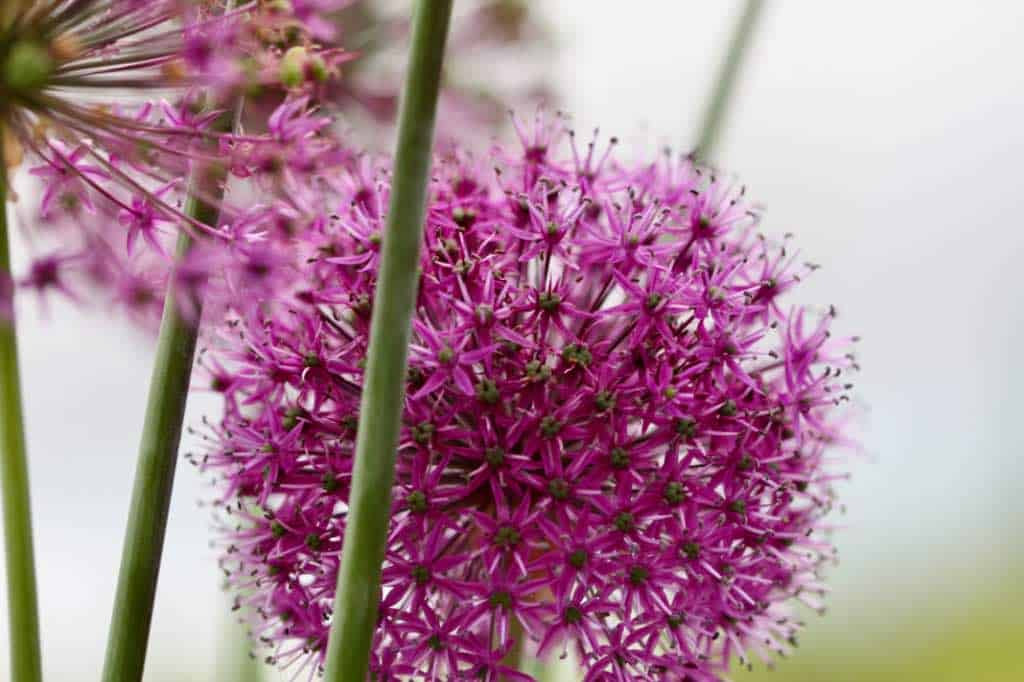
Do Allium Bulbs Multiply Each Year?
Alliums will naturalize, and multiply each year if planted in an ideal planting location. Although each bulb may only last for 3 to 4 years, the plants will continue to grow in the area where they are planted, by this process of multiplication.
The bulbs can be dug up in autumn and divided, by removing the bulblets and replanting, increasing your allium flowers and bulbs in the garden.
Some allium varieties will also spread via seed, although not all varieties are propagated this way. Some alliums in fact can be sterile, and will not produce any seeds at all.
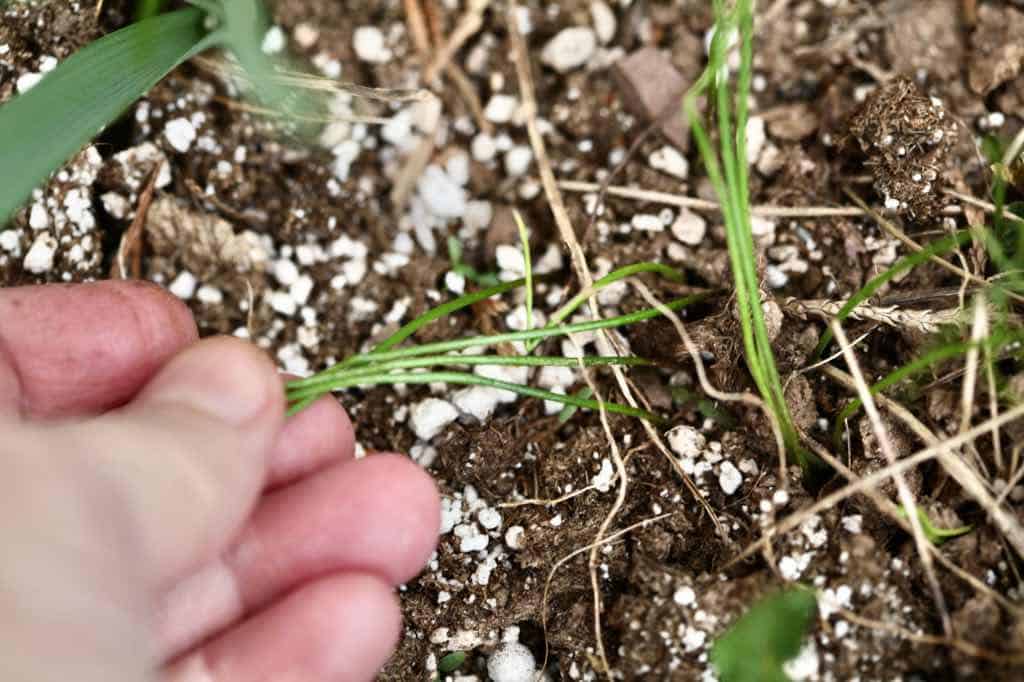
Purple Sensation Allium is a personal favorite, and this allium is easily grown from seed.
I have a patch of ornamental allium of this cultivar planted about 10 years ago. This allium patch continues to bloom every year from bulb multiplication and self seeding.
Alliums grown from seed will eventually develop bulbs at the base of the foliage for energy storage and flowering.
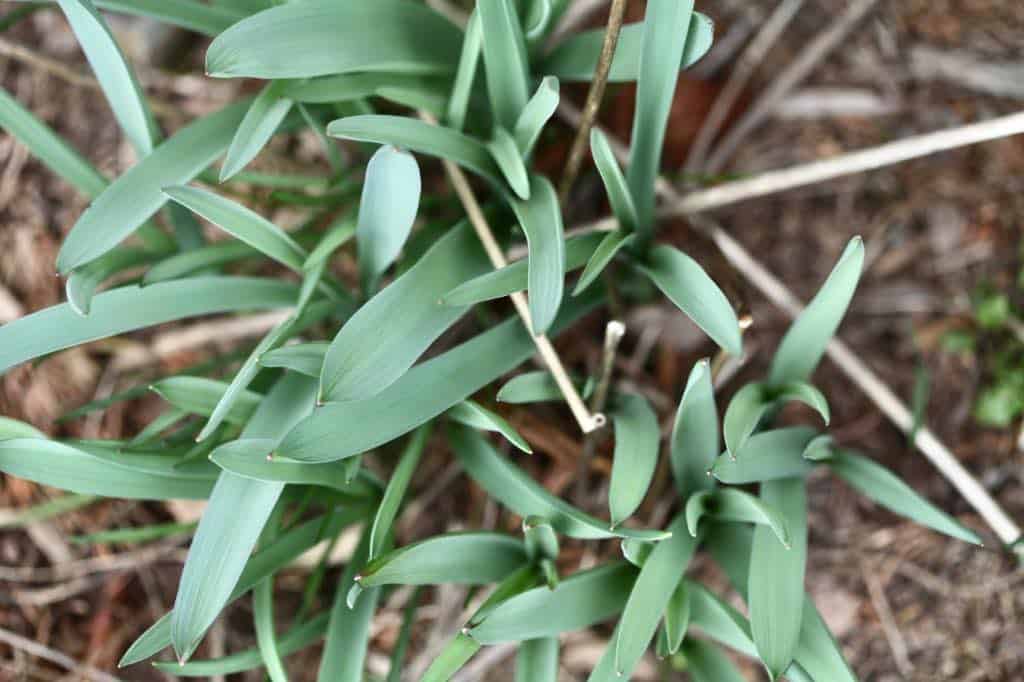
Conclusion
When it comes to ornamental allium bulbs, most are planted in the fall.
As long as the soil remains workable, and you are able to plant the bulbs at the right depth, and with the proper spacing, you should be able to plant them.
Not all alliums are planted in the fall. Some allium varieties are also planted in spring, and these varieties do not require a winter chill before planting.
Consider growing alliums in your garden bed. These interesting plants have an early bloom season, and look great in cottage gardens planted with tulips and daffodils.
Alliums also look great in structural modern gardens.
The beauty of these unique flowers makes them well worth having in any garden space. Every year I add more to my collection, and look forward to seeing them bloom every spring.
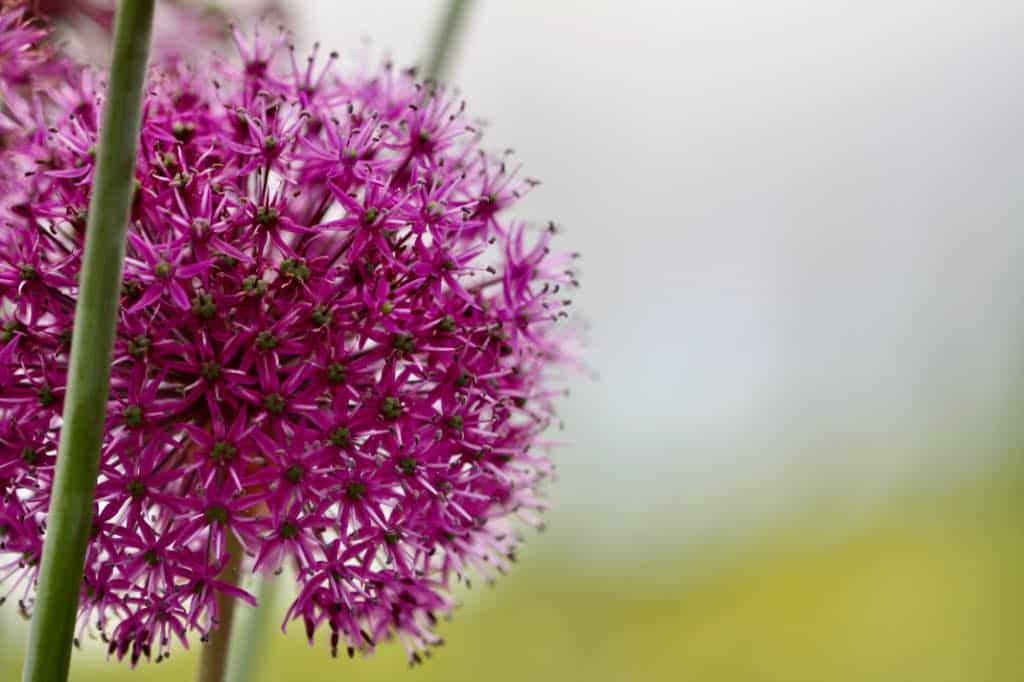
Have you ever wondered how late you can plant allium bulbs, or have you planted your bulbs late in the season? Be sure to leave a comment below to share your experience!
Other Posts You May Like:
See the Web Story on How Late You Can Plant Allium Bulbs!
PIN IT FOR LATER!
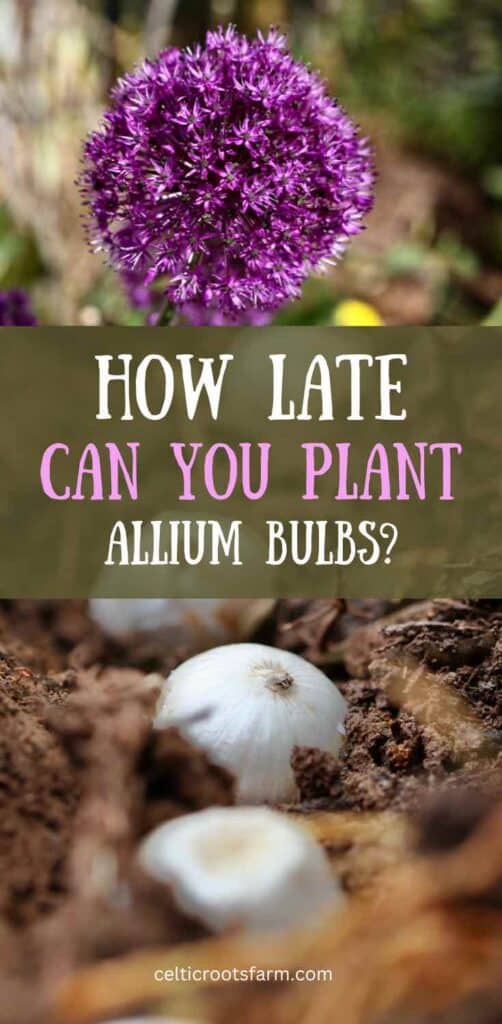

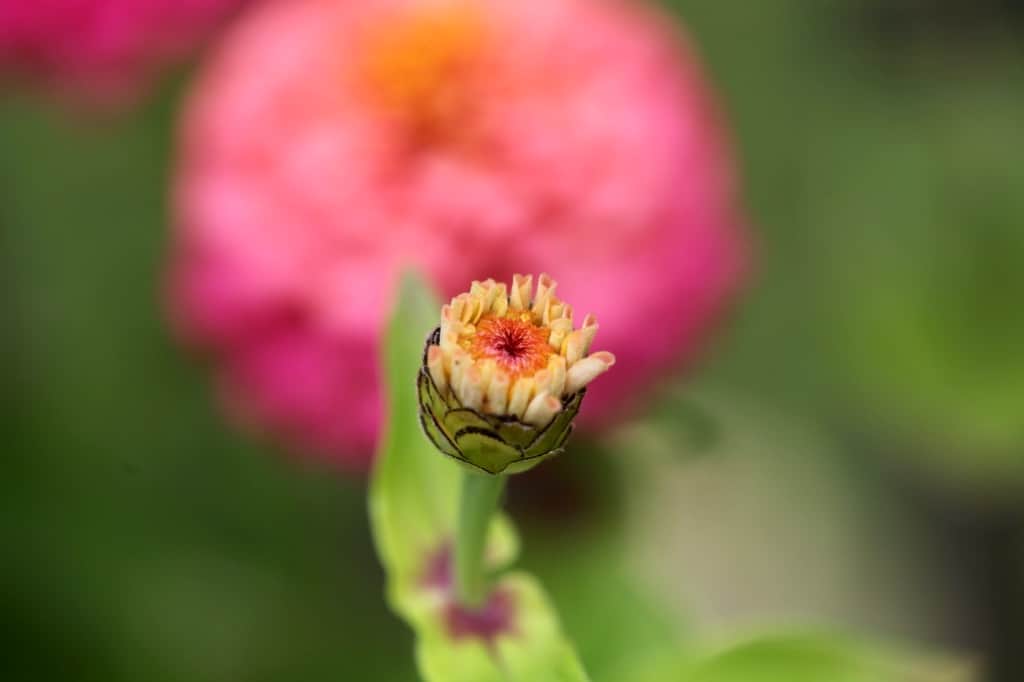
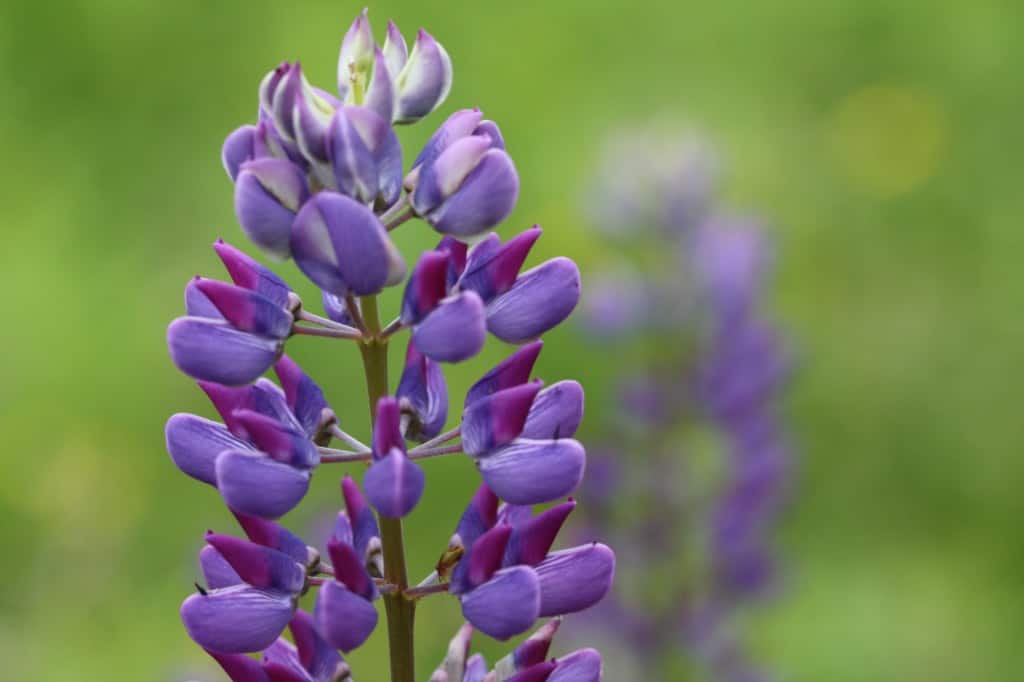
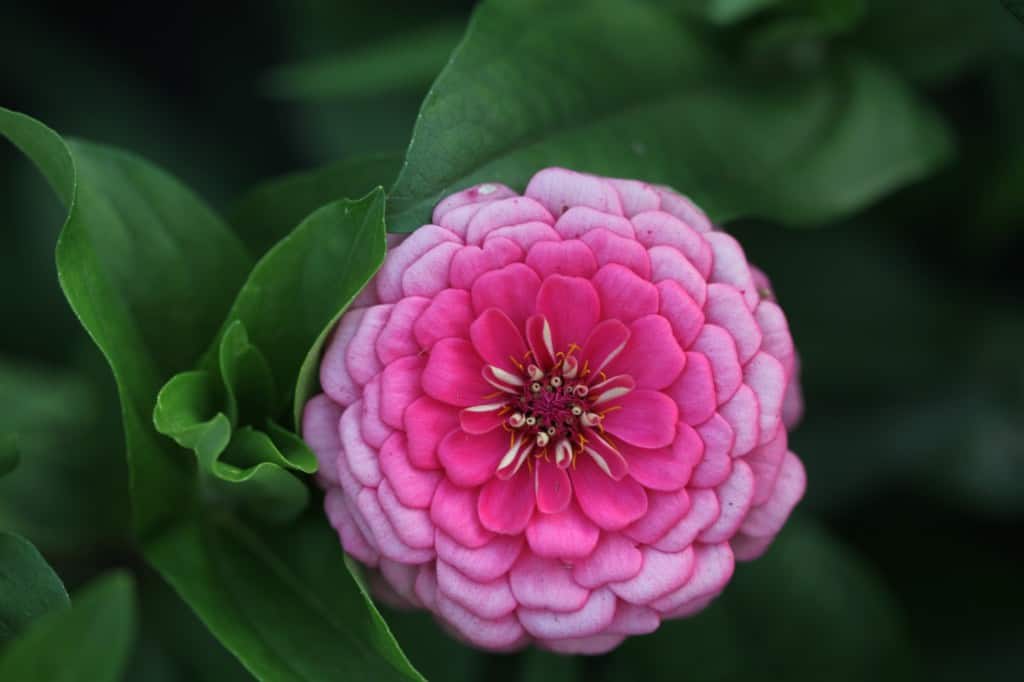
Leave a Reply